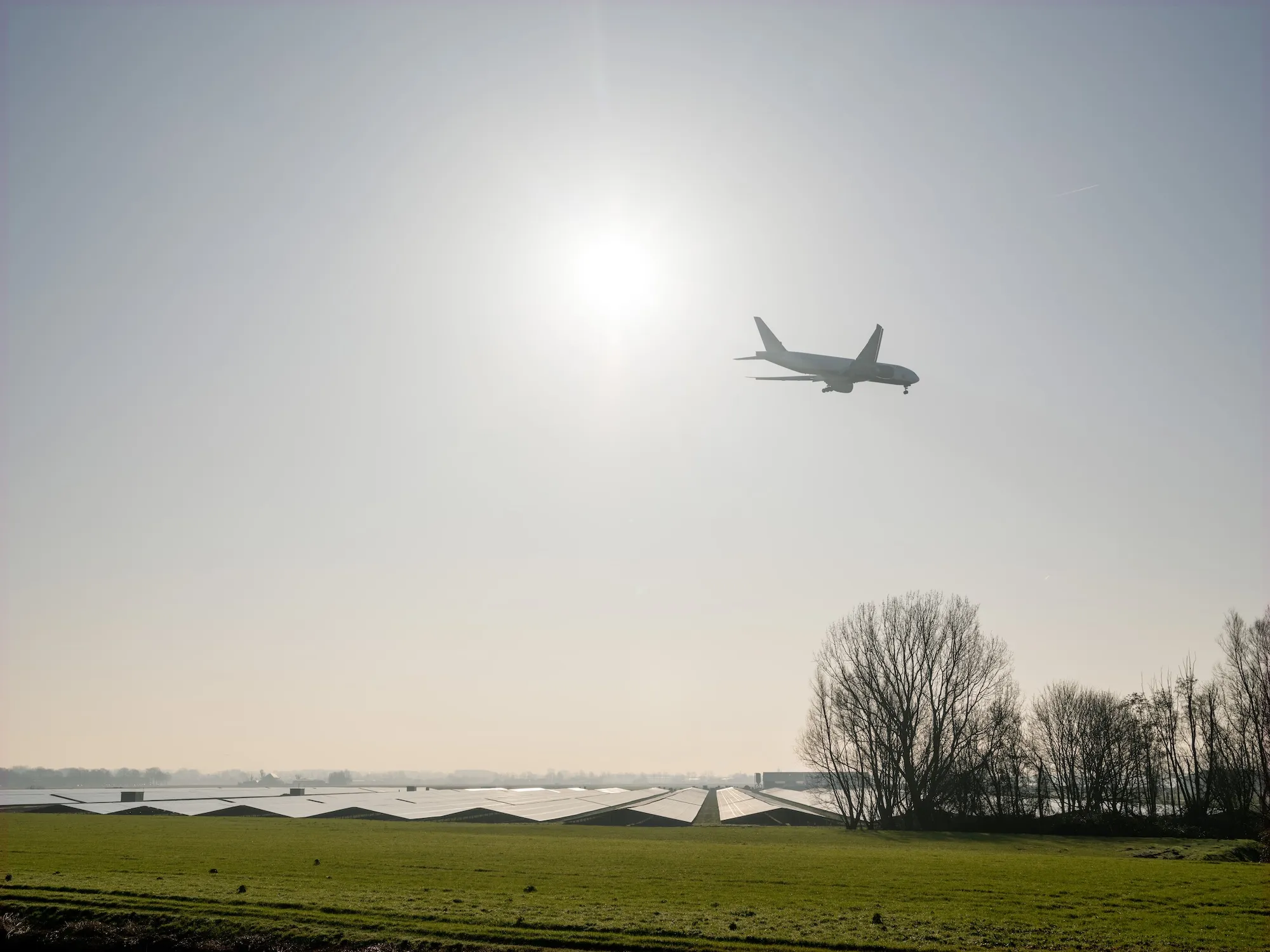AMSTERDAM — A solution has been found for the solar park located beneath the approach routes of the Polderbaan (18R-36L) and Zwanenburgbaan (18C-36C) runways to safely coexist with Amsterdam Schiphol Airport (AMS).
Schiphol, De Groene Energie Corridor (DGEC), the municipality of Haarlemmermeer, and the Ministry of Infrastructure and Water Management have decided to begin the removal of solar panels to eliminate the existing safety risk.
“Safety is always top priority, both at and around our airport. We've been working hard to achieve this over the past few months. We're pleased to be on our way to a solution that ensures safe air traffic, reliable airport operations, and sustainable energy. This will initially involve temporarily removing the solar panels and working together to find a safe solution, but also making long-term arrangements, as good neighbours, to ensure that the solar park can safely coexist with the airport. We appreciate DGEC's constructive approach and understand the significant impact this process has on them,” said Patricia Vitalis, CEO at Schiphol.
“We've seen that the glare from the solar panels poses problems for flight safety. In addition, there was a risk to airport operations, with potentially many delayed and cancelled flights, as well as a prolonged change in runway usage, which would result in additional noise nuisance for the surrounding area. Therefore, I've decided that the ministry will help to resolve the problem, together with the parties involved,” commented Minister Tieman at Infrastructure and Water Management.
“Haarlemmermeer is making a significant and essential contribution to the energy transition for both residents and businesses. We, Schiphol, the Ministry of Infrastructure and Water Management, and DGEC support this initiative, but in practice, we have encountered unforeseen glare. With this joint solution, we are focusing on both aviation safety and the energy transition. However, the added value lies primarily in our collaborative approach to future solutions from various perspectives, so we can further develop the solar block around the airport in a safe way,” added Charlotte van der Meij, Councillor for Climate & Energy, and Beryl van Straten, Councillor for Spatial Planning.
Temporary Safety Measures
DGEC has begun dismantling 78,000 solar panels on fields A and B. Fields C and D, with 150,000 solar panels, will be dismantled as soon as possible.
“We are pleased that we have reached an overall solution together with Schiphol, the municipality, and the ministry. The energy transition sometimes presents challenging issues. Thanks to the good cooperation with all parties involved, we can combine sustainable energy and flight safety. This is an important step, not only for this project, but also for other sustainable energy projects throughout the Netherlands,” said Bert Creemers, Director of DGEC.
To ensure air traffic safety before all panels are removed, temporary safety measures have entered into force, effective from August 28 until September 29, 2025, or until solar panels have been removed.
In case of sunny weather, Zwanenburgbaan (18C-36C) will be unavailable for landing during specific periods between 14:40 and 17:00, ranging from a few minutes to one hour. Aircraft will be landing on Schiphol-Oostbaan Runway instead if necessary.
Daily weather forecasts will be used to assess if Zwanenburgbaan is safe to use.




